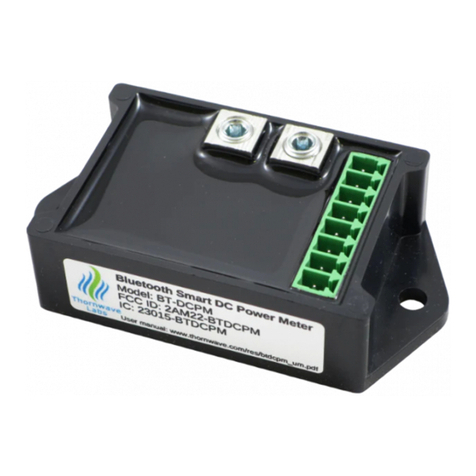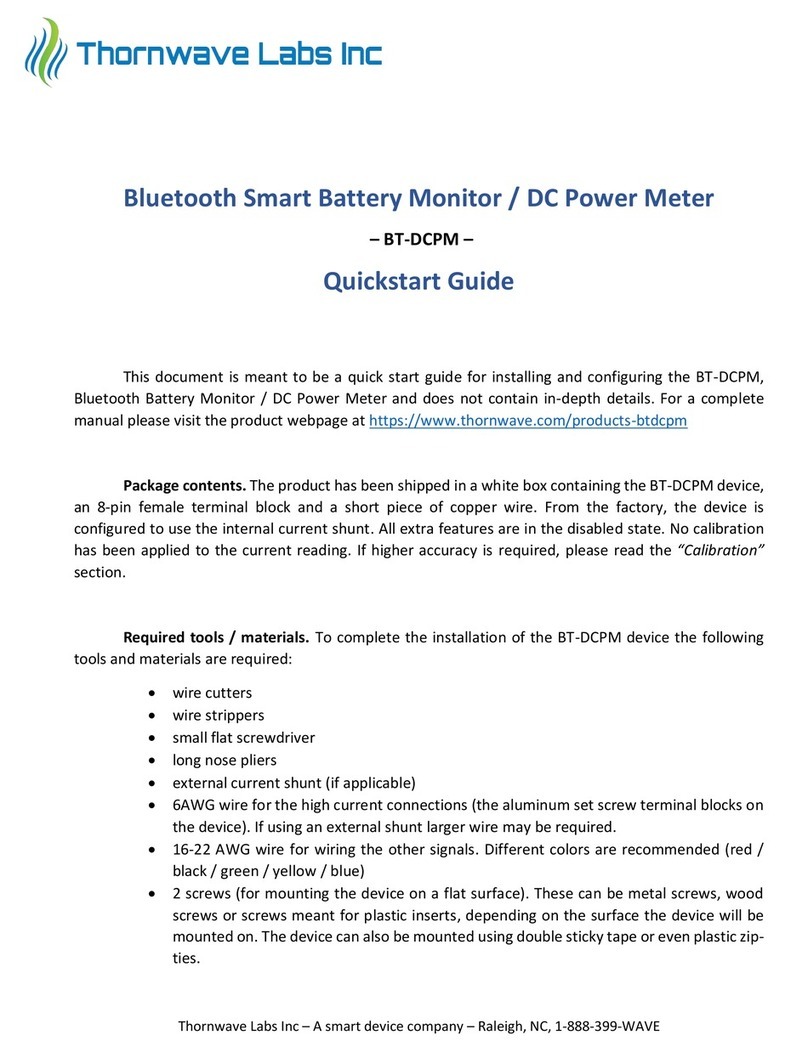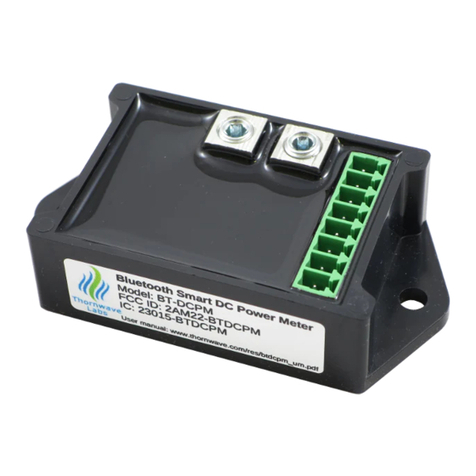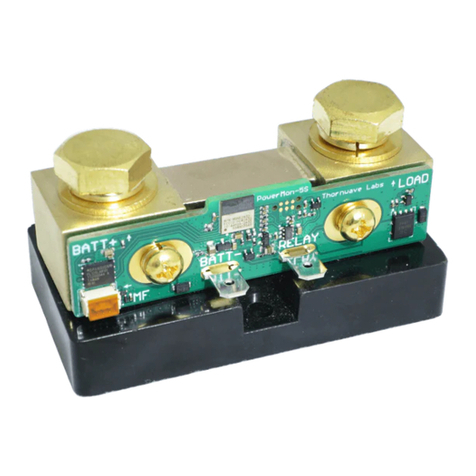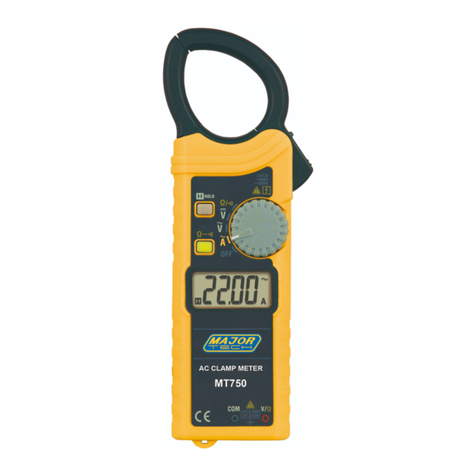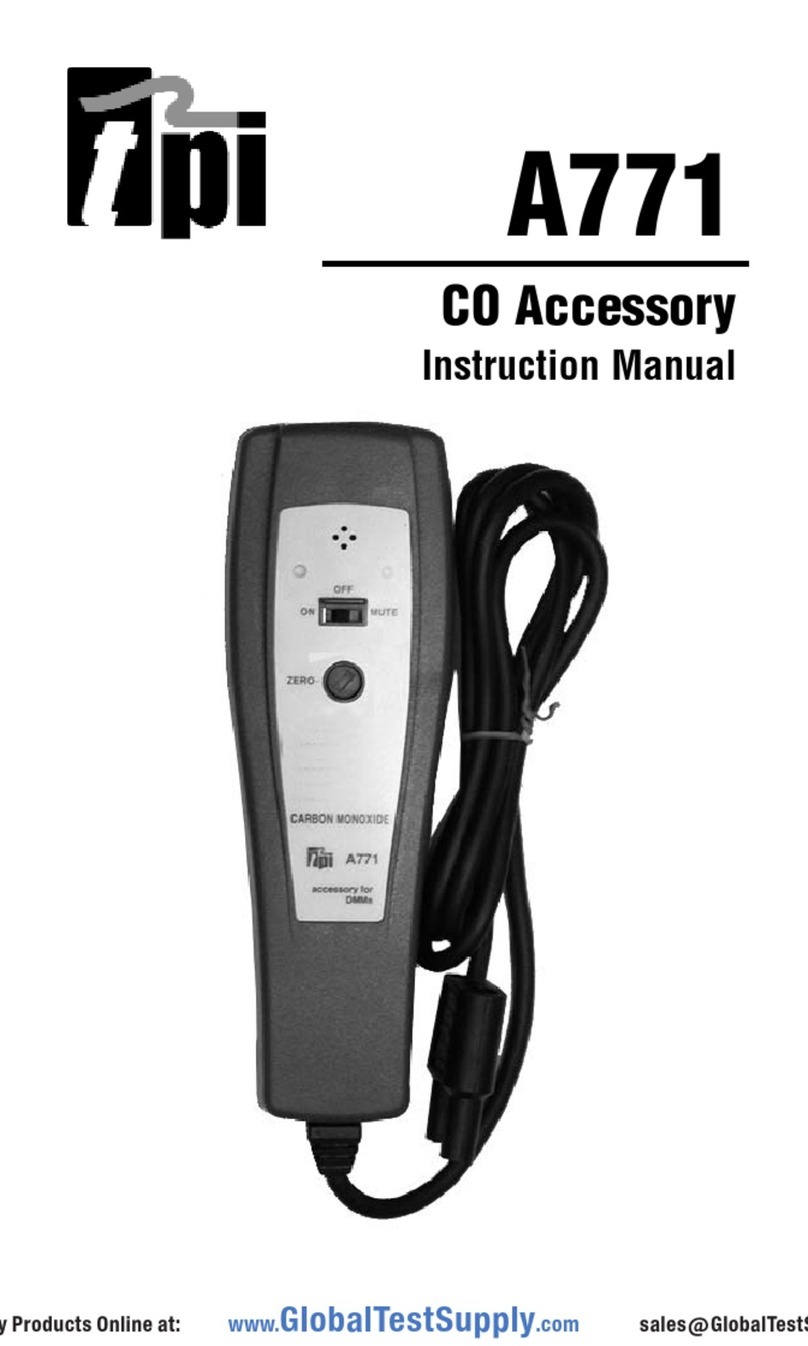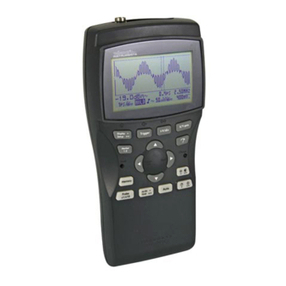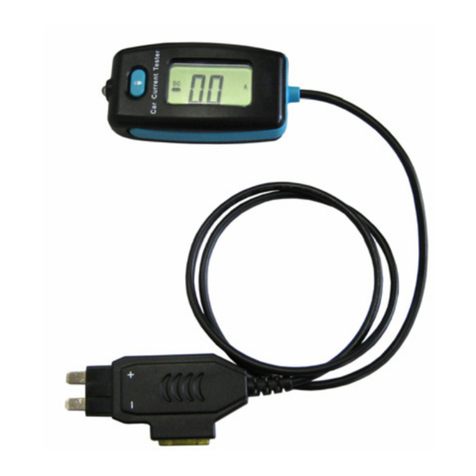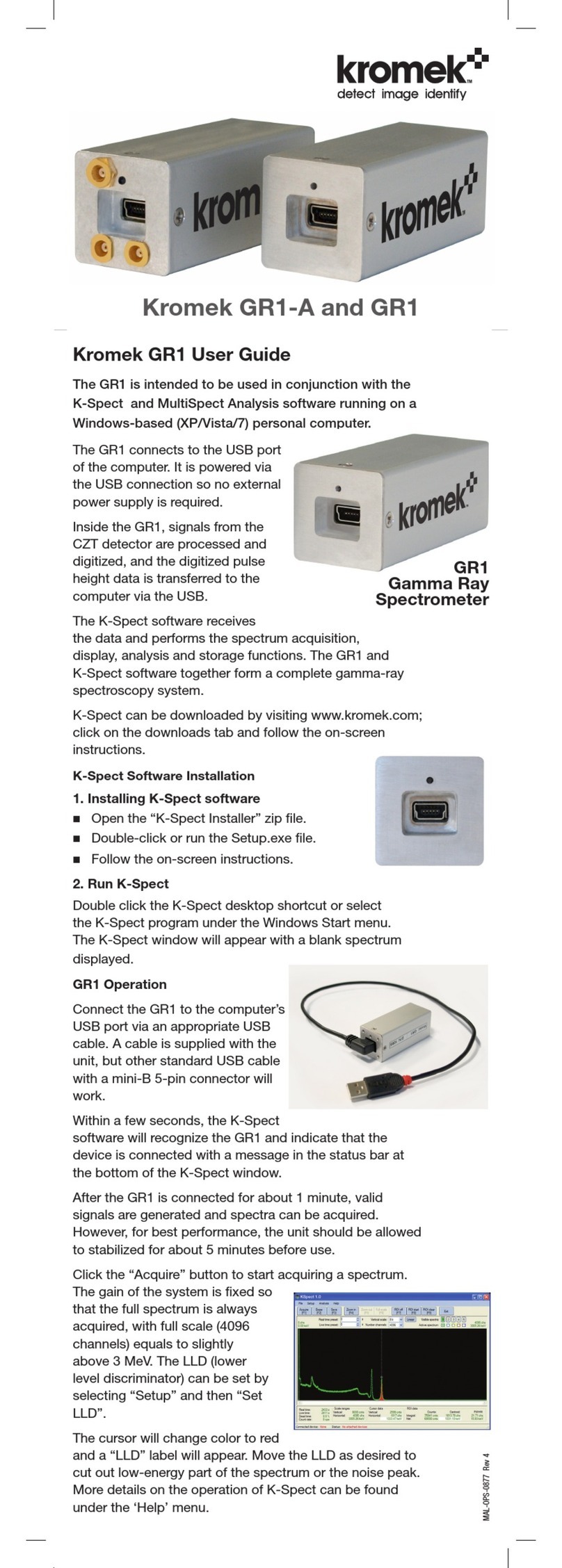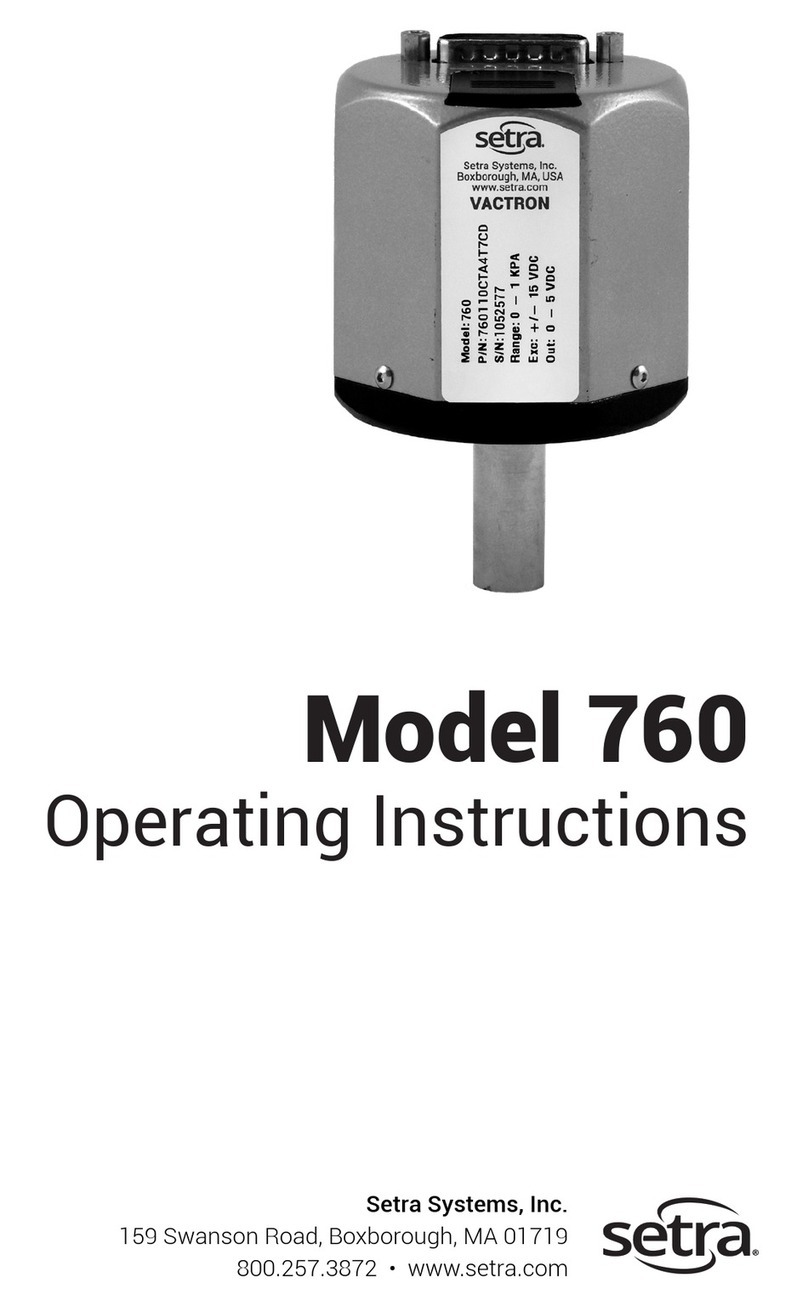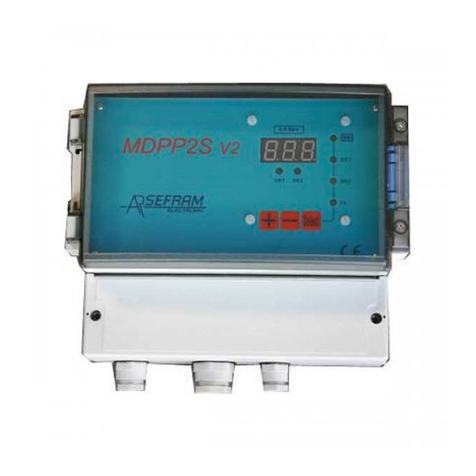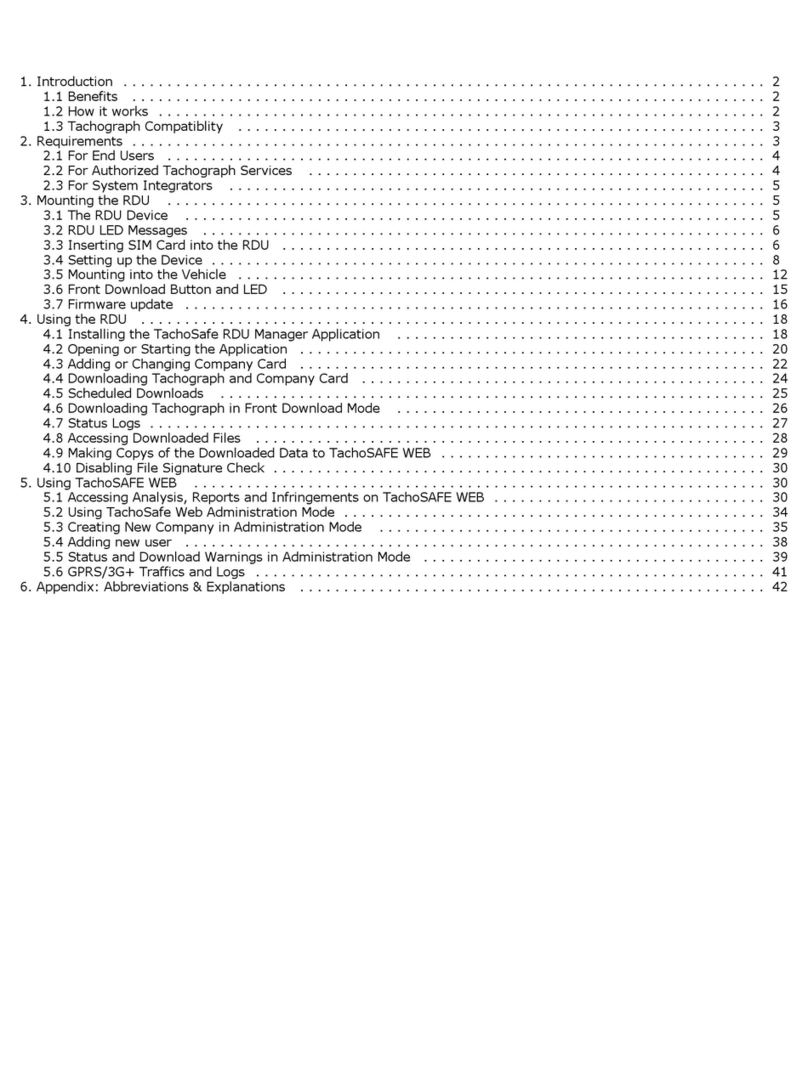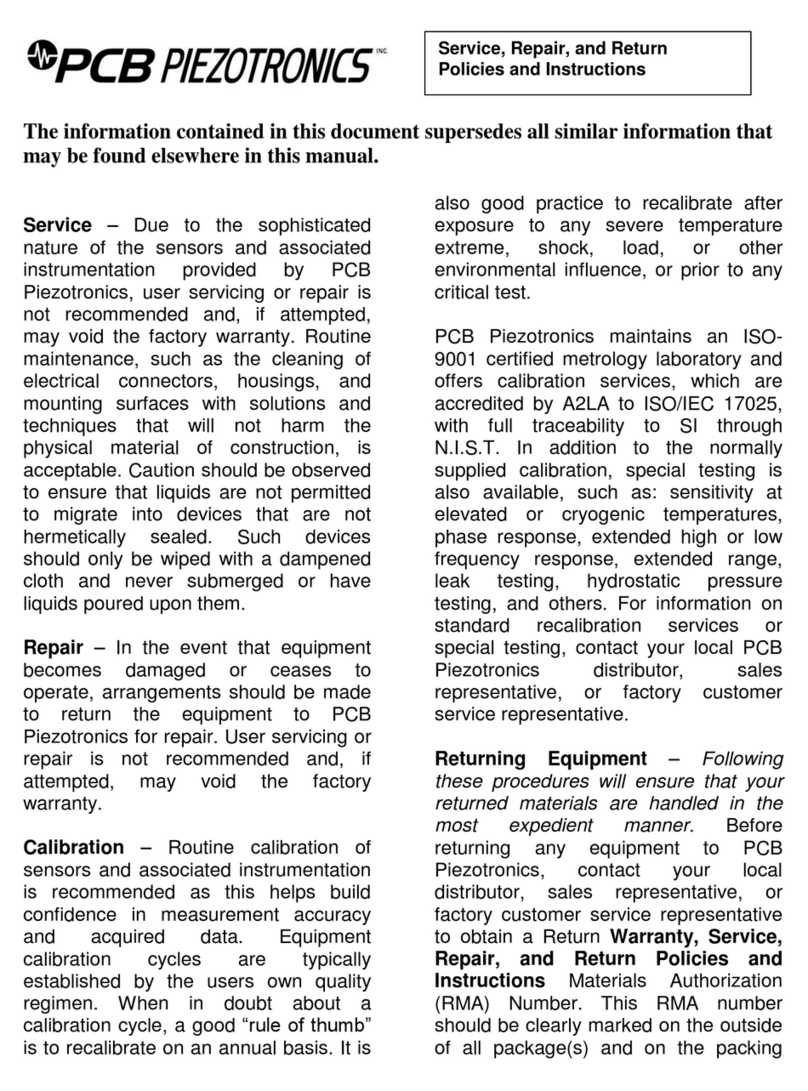Thornwave Labs PowerMon-5S User manual

1
PowerMon-5S
Bluetooth Low Energy
500A Advanced Battery Monitor / DC Power Meter
–USER MANUAL –

2
BRIEF
PowerMon-5S is a 500A Bluetooth Low Energy advanced battery monitor / DC power meter. This tool
can be used in any battery or DC powered circuit to monitor, analyze, and log the most important electrical
parameters: voltage (0-32V), current (0-500A), power (W), energy (Wh), battery charge (Ah), and temperature.
Many other parameters are computed: the battery state of charge (% SoC), remaining time on battery at current
load, and a multitude of battery / DC power statistics. The device can log the data for up to 3 years, allowing for
advanced data analysis and troubleshooting. All battery monitors on the market that log data, do it inside the
mobile application but PowerMon-5S logs it inside internal memory. This makes PowerMon-5S superior. The
device can drive a mechanical or solid-state relay which allows it to function as a low voltage disconnect, high
voltage disconnect, over-current disconnect, temperature controller, remote on/off switch, timer, and
generator control. A mobile device running either Android or iOS and the PowerMonX app (available for free on
Google Play Store and Apple App Store) is required for using this device.

3
FEATURES
•Measures voltage, current, power (W),
charge meter (Ah), energy (Wh), and
temperature
•Operates at up to 32V and 500A of
continuous current using the integrated
current shunt
•Data logging for up to 3 years
•Can drive one relay or SSR (solid-state relay)
•Low / high voltage disconnect
•Over-current disconnect
•Low / high temperature disconnect
•Generator control
•Battery monitor (battery fuel gauge),
displays the state of charge in percentage
and the remaining time on battery at
current load
•Works with all types of batteries
•Timers
•Can use an external temperature sensor
(DS18B20 based)
•User / master password protection
•Very low power consumption (see
Performance Parameters)
•Bluetooth LE radio with internal antenna
and long range
•Measures only 3.25” x 1.75” x 1.75” (82mm
x 45mm x 45mm) including
•Weatherproof
•Free PowerMonX app is available for
Android and iOS.
•Most parameters can be configured,
allowing it to achieve top performance with
all kinds of batteries
TYPICAL APPLICATIONS
•RVs, boats, off-the-grid cabins
•Solar and wind alternative energy systems
•Vehicle batteries
•Backup electrical systems
•Automation: solar irrigation systems, solar streetlights, general-purpose DC timers

4
TERMINAL DESCRIPTION / INTERNAL DIAGRAM
No.
Type
Name
Terminal Description
1
10mm hex
bolt
BATT+
Battery positive. PowerMon-5S takes its power from this
terminal. It also measures the voltage at this point. Connect
to the battery positive.
2
¼” blade male
terminal
BATT-
Battery negative. Usually also the chassis ground. Connect
using the supplied black wire to the battery negative.
3
10mm hex
bolt
LOAD
Connect to the loads / charger / solar charge controller
4
¼” blade male
terminal
RELAY
Relay output. It drives a mechanical or solid-state relay. The
device connects the RELAY terminal to the BATT- internally
when the power is turned ON from the app. Use the
supplied blue wire to connect to a relay.
5
connector
MF
MultiFunction connector. Can be used to connect an
external temperature sensor or external pushbutton.
1
2
3
4
5

5
SPECIFICATIONS
Absolute Maximum Ratings 1,2
Maximum voltage at the BATT+ / LOAD terminals
+32V
Maximum voltage at the RELAY terminal
+32V
Maximum current through the RELAY terminal
(maximum relay coil current)
2A
Maximum current through the shunt
500A continuous
Operating temperature
-30°C to +85°C
1. Stresses greater than those listed under “Absolute Maximum Ratings” may cause permanent damage to the device.
2. All voltages are referenced to the ground (BATT- terminal) unless otherwise specified.

6
Performance Parameter
Value
Measured voltage (BATT+)
7 ~ 32V
Measured voltage accuracy
max 0.5%, typ. 0.25% (hw rev 3.0)
max 0.2%, typ. 0.1% (hw rev 3.1)
Measured current
-500A to 500A
Current monitoring accuracy
0.5% - without calibration
0.25% - with calibration
Temperature
1°C / 1°F resolution
Data logging sample rate
1 sec –up to 18 days
2 sec –up to 36 days
5 sec –up to 90 days
10 sec –up to 180 days
20 sec –up to 1 year
30 sec –up to 1.5 years
1 min –up to 3 years
Current draw (current consumed by the device) (using
the latest firmware version)
at 12V
at 24V
at 32V
hw rev 3.0 hw rev 3.1
3.5 mA 1.5mA
3.7 mA 1.6mA
4.0 mA 1.7mA

7
COMPLIANCE STATEMENTS
FCC
ATTENTION: Changes or modifications not expressly approved by Thornwave Labs Inc could void the
user's authority to operate the equipment.
ATTENTION:This device complies with Part 15 of the FCC rules. Operation is subject to the following two
conditions: (1) this device may not cause harmful interference and (2) this device must accept any interference
received, including interference that may cause undesired operation.
ATTENTION: Cet appareil est conforme à la Partie 15 des règlements de la FCC. L'opération doit se
conformer aux deux conditions suivantes: (1) cet appareil ne peut causer d'interférences nuisibles et (2) cet
appareil doit accepter toute interférence reçue, y compris les interférences qui peuvent provoquer un
fonctionnement indésirable.
IC RSS-102 RF Exemption
This system has been evaluated for RF Exposure per RSS-102 and is in compliance with the limits specified
by Health Canada Safety Code 6.
L’exposition aux radiofréquences de ce système a été évaluée selon la norme RSS-102 et est jugée
conforme aux limites établies par le Code de sécurité 6 de Santé Canada.
IC RSS-Gen 8.4
This device complies with Industry Canada license-exempt RSS standard(s). Operation is subject to the
following two conditions: (1) this device may not cause interference, and (2) this device must accept any
interference, including interference that may cause undesired operation of the device.
Le présent appareil est conforme aux CNR d'Industrie Canada applicables aux appareils radio exempts
de licence. L'exploitation est autorisée aux deux conditions suivantes: (1) l'appareil ne doit pas produire de
brouillage, et (2) l'utilisateur de l'appareil doit accepter tout brouillage radioélectrique subi, même si le
brouillage est susceptible d'en compromettre le fonctionnement.

8
SAFETY INSTRUCTIONS
Warning!
Read all the instructions and cautions before using the PowerMon-5S device. Thornwave Labs Inc does
not assume responsibility for any injury or property damage caused by improper installation, bad wiring, or use
of PowerMon-5S outside of its intended purpose. The device should be installed by a professional.
Warning!
The PowerMon-5S device should not be used for any medical purposes, life-sustaining equipment, safety
applications, or any application where equipment failure can cause injury, death, fires, or any other hazard.
Warning!
There are no serviceable parts or fuses inside the power meter! Do not disassemble or attempt to repair!
The unit operates with voltages up to 32V which can be lethal or cause serious and permanent injury.
Warning!
Do not submerge under water or other liquids. The device is neither weatherproof nor waterproof.
Covering the device with liquid electrical tape may improve the resistance to the elements.
Warning!
The device is to be connected to DC circuits only, not exceeding 32V and 500A. Failure to do so will result
in equipment damage. Confirm that all connections are tight to avoid excessive heating, sparks, or fires. Never
connect without using a properly sized fuse or circuit breaker.
Warning!
Batteries are dangerous! Do not short-circuit a battery or the power meter. Batteries can produce
flammable and explosive gases and can generate very high currents that can lead to serious consequences
including explosion, fire, damage to equipment, personal injury, and even death. It is the user’s responsibility to
operate the equipment in a safe manner. Do not charge batteries in an enclosed environment unless allowed
by the manufacturer of the battery. Never connect a load to a battery without using fuses or circuit breakers
properly sized for the wires/ equipment.
Warning!
Although PowerMon-5S coupled with a relay can disconnect power if an over-current condition occurs,
it should not be used to replace circuit-breakers. A properly rated circuit breaker or fuse should be used to
protect the load and the wiring!

9
OVERVIEW
Installation. PowerMon-5S was designed to be installed inside an equipment bay, or inside a plastic
enclosure where it will be protected from water, high humidity, condensation, and battery or other corrosive
gases. The device should not be installed inside an all-metal enclosure since that will significantly reduce the
Bluetooth range. Only one screw is required to mount the device on a flat surface. The second mounting hole is
partially obstructed by the circuit board. If mounting using both holes is required, the circuit board can be
removed. Pay attention to re-install the two washers between the shunt and the circuit board. Failure to do so
will result in a short-circuit that will damage the circuit board. Thornwave Labs does not take responsibility for
damage caused by removing the circuit board. Use the enclosed black wire to connect the battery negative to
the left side terminal. Use the blue wire to connect the right-side terminal (RELAY) to the relay coil (if a relay is
installed).
Device power. The PowerMon-5S device is drawing its supply power from the BATT+ / BATT- terminals.
Power should always be present. If the device loses power, it will forget the internal clock.
Integrated current shunt. All loads and charging sources should be connected to the LOAD terminal. The
shunt is rated at 500A / 0.25%. The shunt is can only be installed on the positive side of the circuit.
Zero the current offset. Due to the high sensitivity of the current measurement circuitry inside the
PowerMon-5S device, the value displayed may have a small offset (measurement is different than zero even
when the actual current is zero). Typically, this is less than 0.1A. In situations where the measurement precision
is critical, the offset can be reduced to zero. To do this, disconnect the wire from the load side of the shunt or
make sure the actual current is zero (turn off all the loads). This can also be achieved by turning the power relay
off from the application (in case the system is wired with a relay). Long-tap on the “Current” tab and then “Zero
Current”. The operation will take 3 seconds to complete during which do not allow any current to pass through
the device. Also, do not zero the current offset if the actual current is greater than zero. Doing so will introduce
a very large offset. Any current that is flowing through the shunt when the Zero Current operation is performed
will become the new indicated zero.
Current calibration. Typically, the device can measure current with better than 1% precision. If higher
precision is required, the current measurement can be calibrated allowing up to 0.25% of precision. To calibrate
the current reading, an amp-meter capable of measuring current with a precision better than 0.25% is required.
Connect the amp-meter leads in series with the shunt and read the actual value of the current. Long-tap on the
“Current” tab, tap on “Calibrate Current” and then type the actual value measured by the amp-meter. The sign
of the current does not matter. Once calibrated, the only way to change the calibration is to reset the device to
factory defaults or re-calibrate. The device will not accept a calibration current different from the actual current
reading by more than 10%.

10
Power relay control. PowerMon-5S can drive a power relay (either mechanical or solid-state) using the
RELAY output. When active (relay turned on), the RELAY terminal is internally connected to BATT- by the device.
The relay should be connected between the power supply (battery positive, typically) and the RELAY terminal.
The low/high voltage disconnect, temperature disconnect, over-current disconnect, and generator
control functions require the use of a relay / SSR (Solid State Relay).
Low voltage disconnect. When this feature is enabled, and the battery voltage drops below a specified
threshold, the device turns the relay off, disconnecting the loads to protect the battery from over-discharge. To
disconnect the load, the voltage must be below the set threshold for a configurable amount of time. This feature
helps in situations like cranking an engine or a short high current load that causes the battery voltage to
momentarily drop. The device will re-engage the power relay a configured amount of time after the voltage
goes back above the connect threshold.
High voltage disconnect. This function is similar to the low voltage disconnect, but as the name suggests
it will disconnect the load when the voltage goes above the disconnect threshold and will reconnect the load
when the voltage goes below the reconnect threshold. This mode can be used together with the low voltage
disconnect.
Over-current disconnect. When this feature is enabled and the measured current increases above a
user-specified trip value, the device disconnects the load, protecting the batteries and load from over-current.
The device will re-engage the power relay a configured amount of time after the current drops below the trip
threshold.
Battery fuel gauge. PowerMon-5S computes the battery state of charge and various statistics. This is
accomplished by using coulomb counting. Due to the complex nature of chemical batteries, small errors in
measurement and integrating current over long periods of time will introduce errors in the state-of-charge
estimation. This is normal and expected. For this reason, the device will re-synchronize its SoC counter with the
battery every time a full charge is performed. A full charge is detected based on the chemistry of the battery
but in general, it requires the voltage to be higher than a threshold while at the same time the charging current
is lower than a threshold. The battery fuel gauge will also take into consideration the Peukert effect. The next
table shows the Peukert coefficients used for various battery chemistries.
Battery Chemistry
Peukert Coefficient
Lead Acid - Flooded
1.25
Lead Acid –AGM
1.15
LiFePO4
1.02
Li-Ion/LiPoly
1.02

11
External temperature sensor. PowerMon-5S can read the temperature from an external DS18B20 based
sensor. To use an external sensor, purchase the PowerMon-5S MF Wiring Kit from Thornwave Labs. The
documentation that comes with the kit explains how to connect the sensor. Configure the MF function to
temperature sensor in the general configuration. If the sensor is recognized by PowerMon-5S, the temperature
reading in the Live Data page will change to “Ext. Temperature”.
Internal clock. PowerMon-5S keeps track of time internally. The internal clock can be set by tapping on
the Device Clock tab for longer than one second. The internal date and time will be updated using the system
time provided by the mobile device. If the internal clock is not set the device is not logging data.
Timer function. The device supports controlling the relay using a set of up to 16 timers. Each timer
contains a start time, stop time and repetition. The start time specifies the time of day (HH:MM) when the relay
turns on. Stop time specifies the time of day when the relay turns off. A timer does not need to have both the
start and stop times. One of them can be disabled. This kind of timer should be used in pairs: one turns the relay
on and the second one turns it off. ‘Repetition’ controls the days when a timer will trigger. This can be either
DoW (Day of Week) where the timer repeats on specific days of the week or DoM (Day of Month) where the
timer repeats on specific days of the month.
Using multiple timers, users can create very complex time schedules.
Examples:
Timer1: START 4:50PM, STOP 5:10PM, REPETITION DOW Mon Tue Wed Thr Fri Sat Sun
This timer will run every day and turn the relay on for 20 minutes, from 4:50PM until 5:10PM
Timer2: START 8:00PM. STOP: disabled, REPETITION DOW Mon Tue Wed Thr Fri Sat Sun
Timer3: START disabled, STOP: 7:00AM, REPETITION DOW Mon Tue Wed Thr Fri Sat Sun
This set of timers used together will turn the relay on every day at 8:00PM and turn it off the following
day at 7:00AM. The same effect can be achieved using a single timer. This is just an example.
Timer4: START 12:00AM. STOP: disabled, REPETITION DOM: 1
Timer5: START disabled, STOP: 12:00AM, REPETITION DOM: 8
This set of timers used together will turn the relay on every 1st of the month at 12:00AM and turn it off
7 days later on the 8th of the month at 12:00AM.

12
Monitor. PowerMon-5S monitors the following parameters in real time (two times a second):
Voltage: This is the voltage measured at the BATT+ terminal (referenced to BATT-).
Current: This the current going through the shunt. The value can be zeroed to eliminate any offset. If
higher accuracy is required, it can also be calibrated.
Power: This value is computed as voltage multiplied by current.
Power Meter: This value is the accumulated energy. It counts in Wh (Watt-hour), and it can be reset to
zero. The measurement is purely informational. It is not used for any other purpose by the device.
Charge Meter: This value is the accumulated coulombs. It counts in Ah (Ampere-hour), and it can be
reset to zero. The measurement is for informational. It is not used for any other purpose by the device.
Battery SoC: The battery state-of-charge is displaying in percentage, from 0% to 100%. If the value
displays “unset” is because the battery fuel gauge component inside the PowerMon-5S is not yet
synchronized with the battery. The fuel gauge will synchronize automatically when a full charge is
detected. It is important that the battery fuel gauge is configured correctly (battery chemistry, battery
voltage, and battery capacity). For Lithium batteries a small discharge is required (about 10%) before
applying a full charge to initially synchronize the SoC reading.
Battery Remaining: The time left before the battery is completely discharged assuming the current rate
of discharge. This value is only shown when the discharge current is higher than -0.1A.
Power Status: Displays the current power status of the device (RELAY output status). Possible values are:
OFF, ON, LVD (Low Voltage Disconnect –device is OFF due to an LVD condition), HVD (High Voltage
Disconnect), OCD (Over-Current Disconnect), LTD (Low Temperature Disconnect), HTD (High
Temperature Disconnect). The power can be manually turned OFF. For all disconnect functions to
operate the power must be manually set to ON.
Generator Status: This is shown only when the generator control feature is enabled in the device
configuration. It displays the generator state (the relay state: ON / OFF)
Temperature: This is the internal device temperature. If an external temperature sensor is connected
and configured properly this will change to “Ext. Temperature” indicating that this is now the external
sensor temperature.
Device Clock / Device Date: The internal clock and date of the device. It can be set from the system time
and date.
Bluetooth Signal: The strength of the Bluetooth signal received from the PowerMon device. It is
measured in dBm, and it will be a negative value. The higher the value (closer to zero) the stronger the
Bluetooth signal is. If this value is lower than about -90dBm it will become more difficult to connect and
maintain a connection to the device. This means that you are either too far from the device or there are
too many walls / obstacles in between PowerMon and the mobile phone.

13
Configuration. The device configuration can be changed using the PowerMonX app. The configuration
parameters are grouped in a few categories based on the function affected by these parameters.
General.
Max. Shunt Current (amperes): The maximum current that the shunt is expected to see. Typically, this
is set to the maximum rated current of the shunt, 500A. It can be set lower to potentially increase the
resolution of the reading. To do this it has to be set to lower than 273A. By doing this the resolution
will be increased 4 times. Obviously, the maximum current PowerMon-5S can now measure is only
273A.
Turn On at Startup: The default power status when powering the device. If set to on, the relay will be
turned on automatically when the device is first powered up.
Trigger on Relay Active: If enabled, the device will turn the power on as a response to the RELAY terminal
being temporarily pulled to the ground (BATT-) using a push button.
Invert Relay Logic: Enabling this option will invert the behavior of the RELAY terminal: when the power
is on the RELAY terminal will be floating and when the power is off it will be driven to the ground (BATT-
). When this option is enabled “Trigger on Relay Active” is ignored (disabled).
Connect Filter (milliseconds): The duration of time in milliseconds the LVD (Low Voltage Disconnect),
HVD, and OCD (Over-Current Disconnect) conditions must be removed for the PowerMon-5S to re-
engage the power relay.
MF Terminal Function: Selects the function of the MF terminal: Data Output or External Temperature
Sensor. The external temperature sensors are only available for hardware revision 2.2 or higher.
Data Logging Mode: Configure the data logging sample rate. Possible values are disabled, every second,
2 seconds, 5 sec, 10 sec, 20 sec, 30 sec, or 1 minute.
Low Voltage Disconnect
LVD Disconnect Threshold (V): The voltage in volts below which the power relay will disengage.
LVD Connect Threshold (V): The voltage in volts above which the power relay can re-engage (after the
connect filter time has passed). This must be higher than LVD Disconnect Threshold.
LVD Disconnect Filter (milliseconds): The duration of time the voltage must be below the disconnect
threshold for the relay to disengage. It is used to filter voltage spikes.

14
High Voltage Disconnect
HVD Disconnect Threshold (V): The voltage in volts above which the power relay will disengage.
HVD Connect Threshold (V): The voltage in volts below which the power relay can re-engage (after the
connect filter time has passed). This must be lower than HVD Disconnect Threshold.
HVD Disconnect Filter (milliseconds): The duration of time the voltage must be above the disconnect
threshold for the relay to disengage.
Over-Current Disconnect
OCD Disconnect Threshold (A): The current in amperes above which the power relay disengages.
OCD Disconnect Filter (milliseconds): The duration of time the current must be above the disconnect
threshold to disengage the relay.
Low Temperature Disconnect
LTD Disconnect Threshold: The temperature below which the power relay will disengage.
LTD Connect Threshold: The temperature above which the power relay can re-engage (after the connect
filter time has passed). This must be higher than LTD Disconnect Threshold.
LTD Disconnect Filter (milliseconds): The duration of time the temperature must be below the disconnect
threshold for the relay to disengage.
High Temperature Disconnect
HTD Disconnect Threshold: The temperature above which the power relay will disengage.
HTD Connect Threshold: The temperature below which the power relay can re-engage (after the connect
filter time has passed). This must be lower than HTD Disconnect Threshold.
HTD Disconnect Filter (milliseconds): The duration of time the temperature must be above the
disconnect threshold for the relay to disengage.
Auto-off Timer: If enabled the power will turn off automatically after a specified time since it was
turned on has passed. This effectively becomes a turn-off timer.
Auto-on Timer: If enabled the power will turn on automatically after a specified time since it was
turned off has passed. This effectively becomes a turn-on timer.

15
Battery Fuel Gauge
Battery Chemistry: The chemistry of the battery used (Lead Acid –Flooded, Lead Acid –AGM, LiFePO4,
Li-Ion, Li-Poly).
Battery Voltage: The battery voltage (can be the standard 12V, 24V, 48V, … or custom, in which case the
number of cells in the battery can be configured).
Number of Cells: Number of cells of the battery. 12V Lead Acid batteries have 6 cells. 12V LiFePO4
batteries have 4 cells. If you have batteries connected in series, add the number of cells in each of them.
If batteries are connected in parallel the number of series cells does not change. This is the number of
cells that contribute to the battery nominal voltage.
Total Battery Capacity: Battery capacity in Ah. If batteries are connected in parallel, add their capacities.
If batteries are connected in series the capacity does not change.
Disconnect on Battery SoC Threshold (%): The device will disconnect power (turn the relay OFF) when
the battery state of charge becomes lower than this threshold (in percentage).
Connect on Battery SoC Threshold (%): The device will re-connect power (turn the relay ON) when the
battery state of charge becomes higher than this threshold (in percentage).
Generator Control
Turn On Based on Voltage: If enabled the generator will be turned on when the battery voltage drops
under a specified threshold.
Turn On Voltage Threshold (V): The threshold in volts below which the generator will be turned
on.
Turn On Voltage Filter (milliseconds): The duration of time the voltage must be below the turn-
on threshold for the generator to be turned on.
Turn On Based on SoC: If enabled the generator will be turned on when the battery SoC (State-of-Charge)
drops under a specified threshold.
Turn On SoC Threshold (%): The threshold in percentage below which the generator will be
turned on.
Turn Off Based on Voltage: If enabled the generator will be turned off when the battery voltage increases
above a specified threshold.
Turn Off Voltage Threshold (V): The threshold in volts above which the generator will be turned
off.

16
Turn Off Based on SoC: If enabled the generator will be turned off when the battery SoC (State-of-Charge)
increases above a specified threshold.
Turn Off SoC Threshold (%): The threshold in percentage above which the generator will be
turned off.
Turn Off Delay (minutes): Delay applied between the conditions to turn the generator off become true
and turning the generator off. For example, if set to 1 minute, the generator will stay on for an extra
minute after the voltage or SoC increases above the turn-off threshold.
Default Factory Settings. The device can always be reset to the default configuration using the
PowerMonX app. To do this, connect to a device, tap the top right corner menu and then “Device Information”.
Tap on Factory Reset.
WARNING: When resetting to the factory defaults, all custom settings, and timers will be erased,
including the device calibration, the battery fuel gauge internal state, and the data log.
Password lock. The device can be locked using a master/user password scheme. Upon connecting, the
app will prompt the user to enter the user password if the device is locked. Once the correct password is
entered, the device becomes unlocked and will stay unlocked for the duration of the connection.
The master password locks only certain functions that are critical to the correct and safe operation of
the device. The manufacturer of a custom system using the PowerMon-5S battery monitor can use the master
password to protect those critical areas of the configuration. The critical areas protected by the master
password can be unlocked by tapping on “Master Access Unlock” on the Device Information page.
The following features are not available if the device is locked by the master password: resetting the
power meter/battery statistics, saving the configuration, resetting to factory settings, zeroing, or calibrating the
current reading, clearing the data log, updating the device firmware.
If the device is locked with the user password, entering the master password instead will unlock the
entire device.
Operation. PowerMon-5S is continuously advertising its presence over Bluetooth. PowerMonX is the
required app, and it can be found on the App Store / Play Store for both Apple and Android devices. The app
allows you to scan for PowerMon devices, connect, view the live data, view the battery statistics, change the
configuration, rename the device, configure the password protection, visualize the logged data, and more.
Radio performance. The device contains an internal Bluetooth Low Energy radio operating in the 2.4GHz
ISM band and an internal antenna. For best performance, the device should be installed in such a way as to offer
a path for radio waves to reach it. Metal walls or enclosures can attenuate or completely shield the device.
Installation on non-metallic surfaces is preferred. The mobile device app displays the RSSI value (Received Signal
Strength Indication) in real-time.

17
Renaming the device. Renaming the device can be achieved using the top-right menu button and taping
on “Device Information”. The maximum name length is 8 characters.

18
WIRING DIAGRAM
Typical application with a power relay
•The disconnect functions are available (relay installed)
•The charging sources are connected before the relay. This is done so they cannot be disconnected from the
battery during a low voltage or other disconnect events (very important for an MPPT charge controller).
•The main fuse should be sized based on the maximum system current and the wire size
From the charging sources:
•Solar charge controller
•AC/DC converter
•Inverter / charger
To the loads

19
DIMENSIONS
Dimensions are in mm.

20
ORDERING
Part Number
Description
PowerMon-5S
PowerMon-5S - Bluetooth LE 500A Advanced Battery Monitor / DC Power
Meter
Other manuals for PowerMon-5S
2
This manual suits for next models
1
Table of contents
Other Thornwave Labs Measuring Instrument manuals
Popular Measuring Instrument manuals by other brands

International Light Technologies
International Light Technologies ILT1700 instruction manual

Conrad
Conrad 2533615 Additonal operating & safety instructions
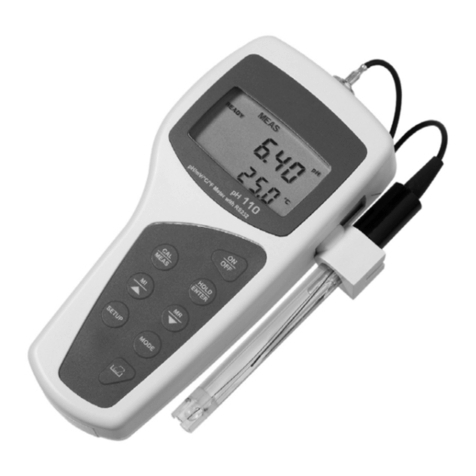
EUTECH INSTRUMENTS
EUTECH INSTRUMENTS CYBERSCAN PH 110 PHMVRS232 METER instruction manual
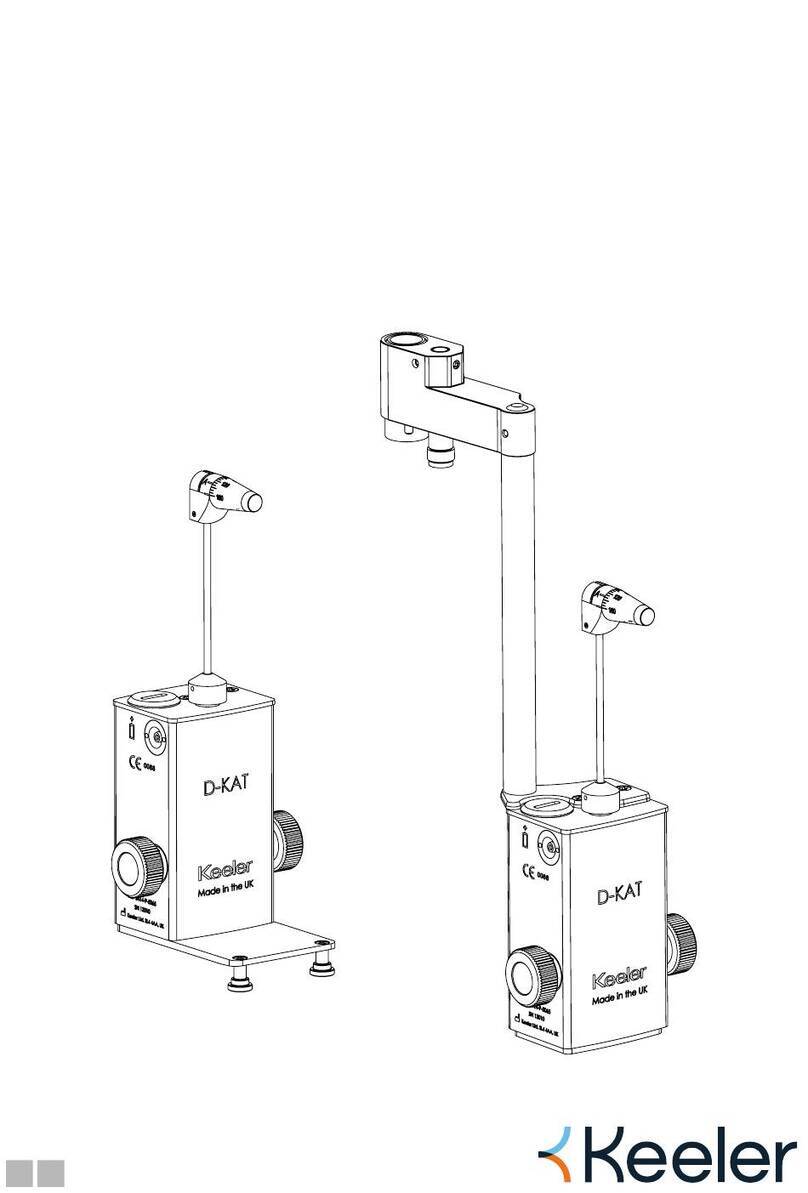
Keeler
Keeler D-KAT R Instructions for use

Thermo
Thermo ARL 3460 Technical description
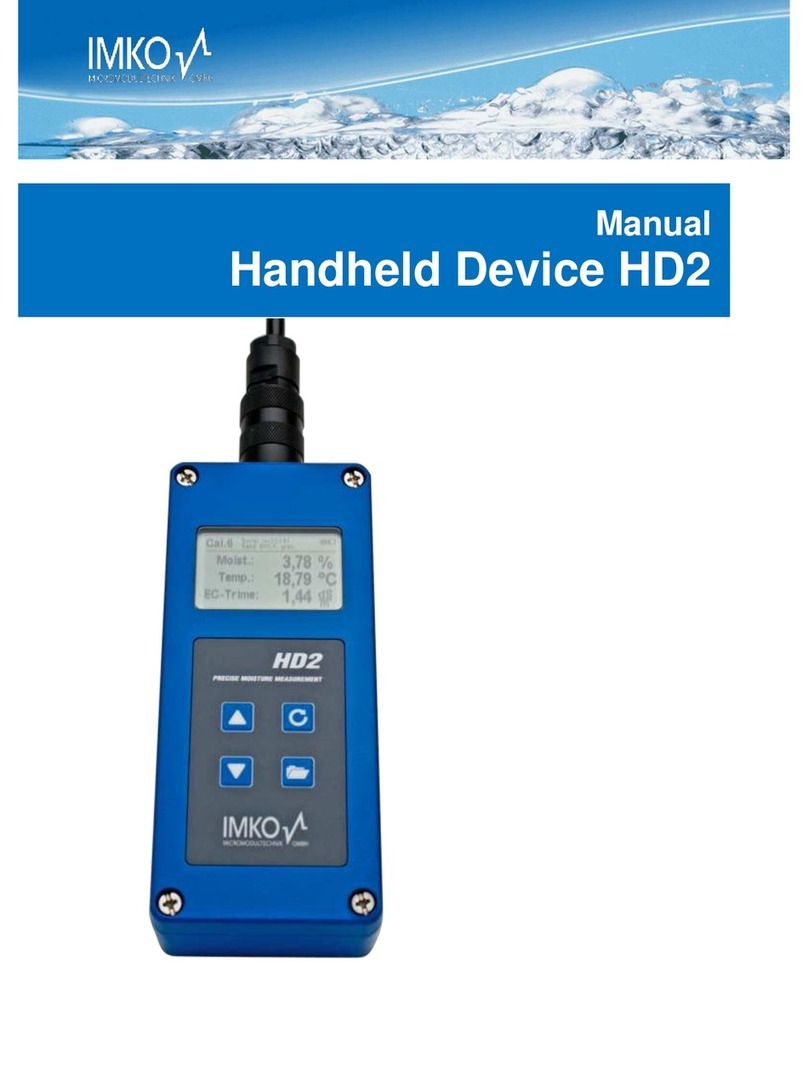
IMKO
IMKO HD2 manual
